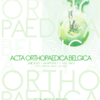Treatment practice for Dupuytren disease in Belgium before 2020: results from an online survey
Dupuytren disease; online survey; splinting; scar management; collagenase
Published online: Aug 23 2022
Abstract
The treatment of Dupuytren disease (DD) continues to evolve. New insights in risk factors for recurrence and new treatment modalities have changed the management strategies for DD over the past decades. However, several differences may remain between these insights and their clinical application. The current tendencies in management of Dupuytren disease, were investigated in a web-based survey. The survey was sent to all members of the Belgian Hand Group, the professional organisation of hand surgeons in Belgium. The participants indicated their preferred treatment for clinical cases and answered questions on the use and timing of splinting, physiotherapy, medication and adapting the management depending on fibrosis diathesis. These findings were compared to recommendations found in the literature. Forty out of 135 surveyed members of the Belgian Hand Group completed the survey and 7 responded incom- pletely, yielding a response rate of 35% for most questions. This is comparable to similar studies. There appeared to be still room for debate on surgical techniques for difficult cases. CCH use increased since reimbursement became available in Belgium, mainly due to satisfying clinical results for patient and surgeon. The survey demonstrated a wide variety in pre- and postoperative splinting protocols, but consensus existed with the literature on postoperative night-time application of orthoses for 7 to 12 weeks.
